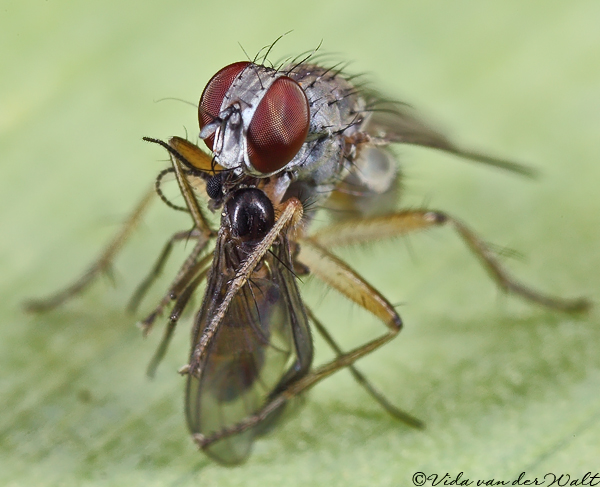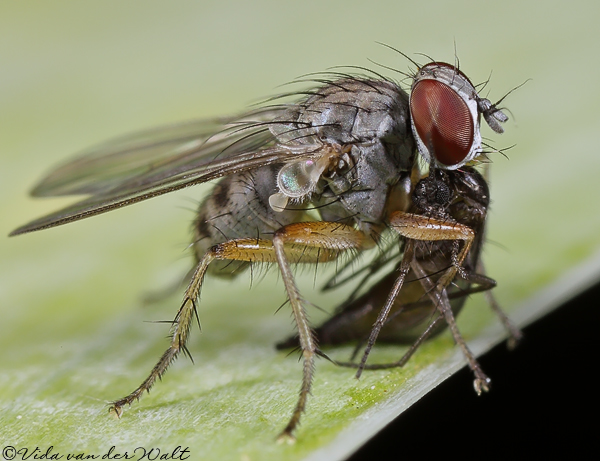Diptera.info :: Identification queries :: Diptera (adults)
|
What is happening here?
|
|
| vida |
Posted on 14-02-2010 17:50
|
|
Member Location: South Africa Posts: 116 Joined: 28.05.09 |
I am puzzled by this behavior. Did this fly catch the insect or did it maybe pick up an already dead insect? I thought only Robber flies catch live prey? Can someone perhaps explain what is happening here? Do you also perhaps know what fly (small in size) this is and what the other insect is? Any help will be appreciated.
vida attached the following image:  [177.67Kb] |
|
|
|
| vida |
Posted on 14-02-2010 17:51
|
|
Member Location: South Africa Posts: 116 Joined: 28.05.09 |
Another angle.
vida attached the following image:  [170.28Kb] |
|
|
|
| paqui |
Posted on 14-02-2010 18:12
|
|
Member Location: Valencia (spain) Posts: 816 Joined: 02.09.05 |
it seems Coenosiinae (Muscidae)and the prey Sciaridae; also Empididae aer predators, nice pics  |
|
|
|
| jorgemotalmeida |
Posted on 14-02-2010 18:12
|
|
Member Location: Viseu - PORTUGAL Posts: 9296 Joined: 05.06.06 |
Coenosia sp. preying a sciarid... Coenosiinae, in general, are predators.
Edited by jorgemotalmeida on 14-02-2010 18:13 |
| Stephane Lebrun |
Posted on 14-02-2010 18:13
|
|
Member Location: Le Havre, France Posts: 8248 Joined: 03.03.07 |
This fly is Coenosia strigipes (Muscidae). Conosia are predator flies, catching other littles flying insects. See this article. There are also others familes of predator flies like Empididae, Hybotidae, Scathophagidae...
Stephane. |
|
|
|
| vida |
Posted on 14-02-2010 18:29
|
|
Member Location: South Africa Posts: 116 Joined: 28.05.09 |
Thank you Paqui, Jorge and Stephane. This is very intersting information. First time I've seen this. Jorge, I'm still looking for Mythicos. Seems we will have to wait untill later in the year. Jorge, I'm still looking for Mythicos. Seems we will have to wait untill later in the year. |
|
|
|
| vida |
Posted on 14-02-2010 18:36
|
|
Member Location: South Africa Posts: 116 Joined: 28.05.09 |
Stephane, thank you for the link to the great article. I love the fact that the flies will climb on a hand and then return with prey. |
|
|
|
| jorgemotalmeida |
Posted on 14-02-2010 18:41
|
|
Member Location: Viseu - PORTUGAL Posts: 9296 Joined: 05.06.06 |
Thanks, Vida. Pay attention to them. They appear in hot and dry climates near Asteraceae/Euphorbiaceae flowers (dunes are a good point to find them, and any place rich in flowers and protected from the wind). Don't forget the nemestrinids as well.
Edited by jorgemotalmeida on 14-02-2010 18:42 |
| Jump to Forum: |













